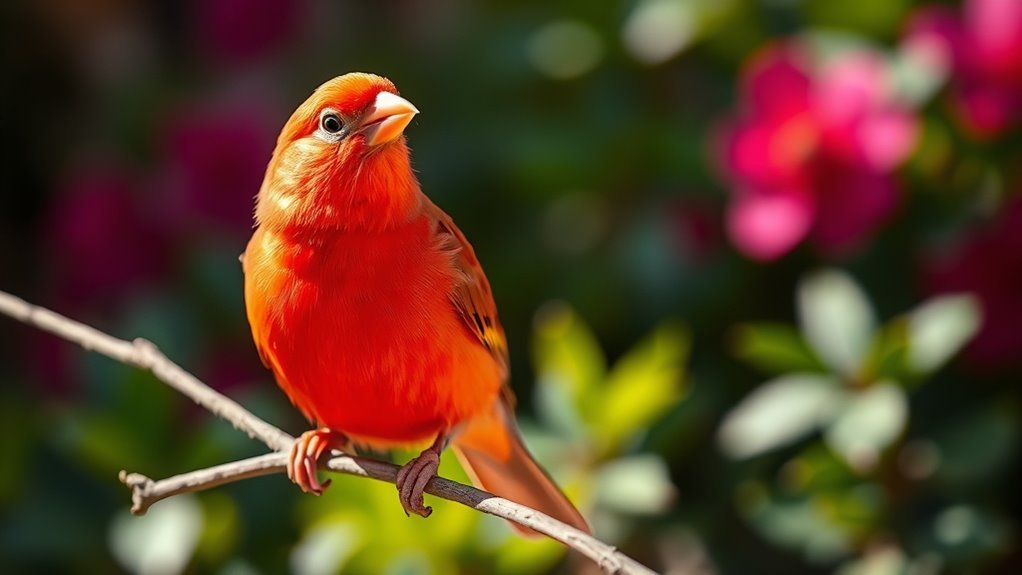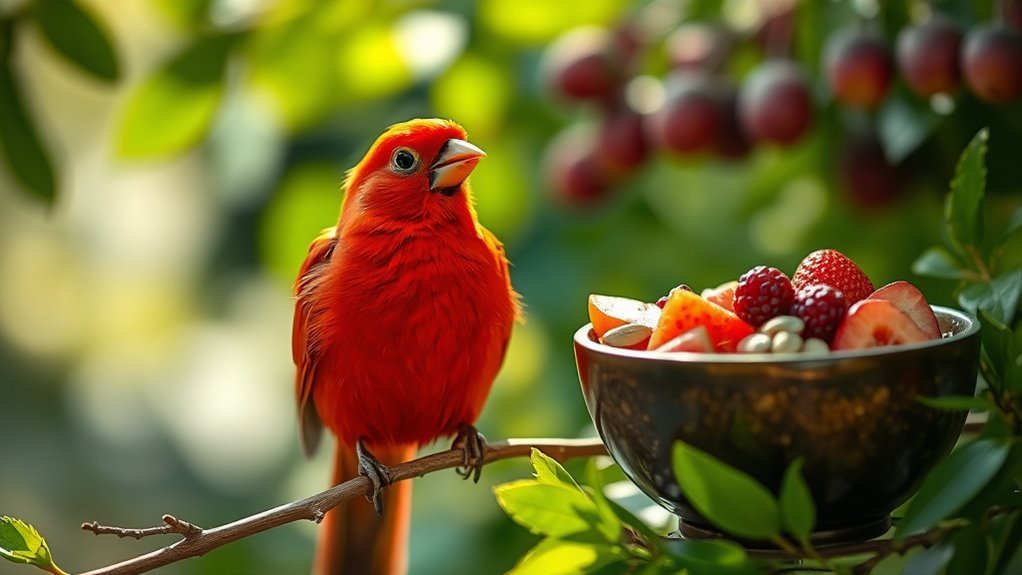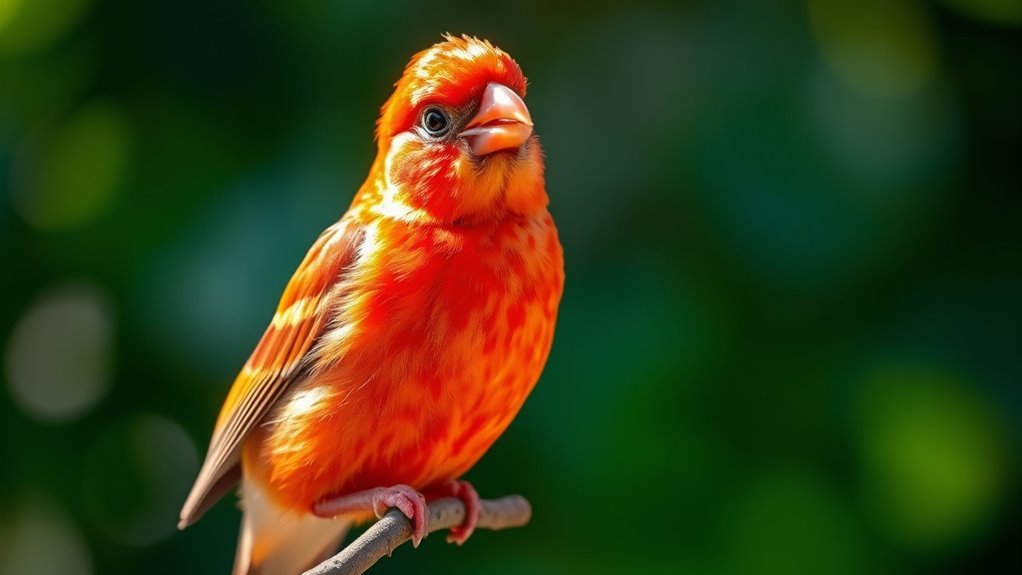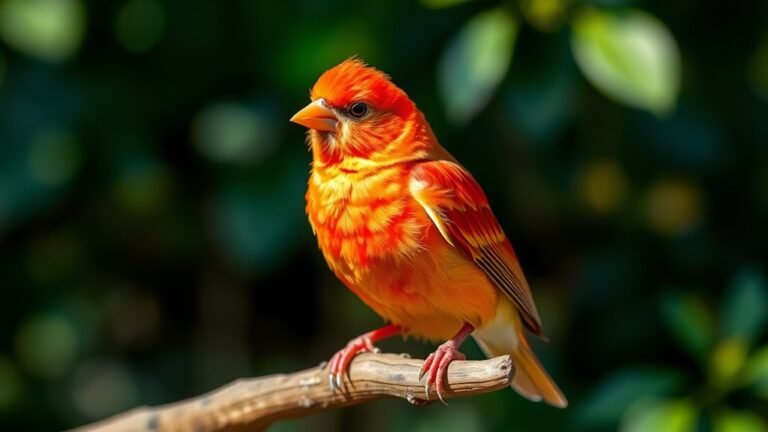The Charming Red Canary Bird: Care and Characteristics
To care for a Red Canary properly, it is important to know their needs. These colorful birds need a balanced diet and enough space to live comfortably. They are social animals that enjoy interacting with people. By understanding their unique traits and care requirements, you can create a healthy environment for them. Let's explore what makes these charming birds special.
Key Takeaways
- The Red Canary is known for its vibrant colors, including shades of red, orange, and yellow, enhanced through selective breeding.
- A balanced diet of high-quality seeds, fresh fruits, and greens is crucial for maintaining their health and song quality.
- Red Canaries require a spacious cage setup with proper perches, climbing branches, and toys to encourage natural behaviors.
- They are social birds that thrive on interaction, enjoying singing and bonding activities with humans and other birds.
- Body language is essential; comfortable canaries show fluffed feathers, while stress can be indicated by a puffed stance.
Origin and History of the Red Canary

The Red Canary's origins come from the wild canaries of the Canary Islands. Breeders have shaped its development by selecting specific breeds to increase its vivid color.
Initially, these canaries were valued for their singing skills. Over time, the interest in their color grew among bird enthusiasts.
The history of the Red Canary shows how closely humans and nature are connected. This relationship continues to thrive in birdkeeping today.
Enjoying these beautiful birds enriches our lives and fosters a shared appreciation for their charm.
Physical Characteristics and Color Variations
The Red Canary is known for its bright color and appealing shape. It has a small and sturdy body with strong legs.
The colors come from a mix of genetics, resulting in shades of red, orange, and yellow. Each bird has unique feather patterns. Some are solid-colored, while others have gradients or speckles.
These color differences reflect their breeding history, highlighting what makes each bird special. Understanding these traits can help you connect better with your feathered friend, whether you're an experienced owner or new to canaries.
Diet and Nutrition Requirements

To keep your Red Canary healthy and lively, provide a balanced diet. Offer high-quality seeds, including a mix of canary seeds and some millet. These seeds give the fats and proteins your canary needs.
Add fresh fruits and greens to their diet; this keeps meals interesting and nutritious.
For extra vitamins, consider a vitamin supplement, especially during molting or breeding periods. A good diet helps your canary stay healthy and enhances its beauty and song, bringing joy to your home.
Ideal Habitat and Cage Setup
Creating a suitable habitat for your Red Canary is important for its health and happiness. Start with a cage that's at least 24 inches long, 18 inches wide, and 18 inches high. These dimensions let your bird move around comfortably and stretch its wings.
Add different perches, climbing branches, and safe toys to the cage. These features encourage your canary to engage in natural behaviors and stay mentally active.
Place the cage in a well-lit area, but keep it out of direct sunlight. A quiet corner can help your bird feel more secure.
Social Behavior and Interaction

Understanding your Red Canary's social behavior helps you bond with your pet. Canaries are natural singers and enjoy social interaction with both other birds and you.
To connect, talk softly to your canary and offer treats. Spend regular playtime outside the cage to build trust and affection. Your canary will respond to your voice, creating a unique bond over time.
If you introduce another canary, make sure both birds are compatible to support healthy interactions.
Watch your canary's body language—fluffed feathers show comfort, while a puffed-up stance may indicate stress.
Common Health Issues and Care Tips
Caring for your Red Canary is important for its health and happiness. Common problems such as respiratory infections, feather plucking, and poor diet can affect your bird. Regular check-ups with an avian vet can help find any issues early.
To prevent health problems, keep the cage clean, provide a balanced diet, and give fresh water daily. Create a stress-free environment and encourage playtime to help your canary stay strong.
Frequently Asked Questions
How Long Do Red Canaries Typically Live as Pets?
Red canaries usually live between 10 to 15 years. Their lifespan is influenced by care, nutrition, and genetics. Providing a loving and supportive environment can significantly improve their life quality.
Are Red Canaries Good Pets for Beginners?
Red canaries are great pets for beginners. Their bright colors and friendly nature create a pleasant atmosphere in your home. You will appreciate their cheerful singing, which adds joy to your space. Overall, they are easy to care for and can bring warmth and happiness to your life.
Can Red Canaries Be Taught to Talk?
Red canaries usually do not talk. However, with patience and training, you can encourage them to make sounds. Spend time with your canary regularly. This interaction can lead to surprising sounds and melodies from your pet! Enjoy the process of discovering your canary's unique expressions.
What Is the Average Price of a Red Canary?
The average price of a red canary is between $25 and $100. You can find better prices by checking local breeders or pet stores. Make sure to choose a healthy bird that meets your needs.
Do Red Canaries Require Toys or Stimulation?
Red canaries need toys and activities to stay happy. They enjoy social interactions. Providing different toys and stimulation helps them engage and express natural behaviors. A stimulating environment supports their well-being and keeps them active.

Hello, I’m Amelia White, the founder of birdsfanatic.com. As a lifelong bird enthusiast and spiritual seeker, I’ve always been fascinated by the mystical connections between birds and the human experience. On this site, I share my knowledge and insights into the symbolic meanings and spiritual significance of various bird species, exploring their roles in mythology, folklore, and cultural traditions. Join me on this journey into the world of birds, where we’ll discover the hidden wisdom and guidance that these magnificent creatures have to offer.







